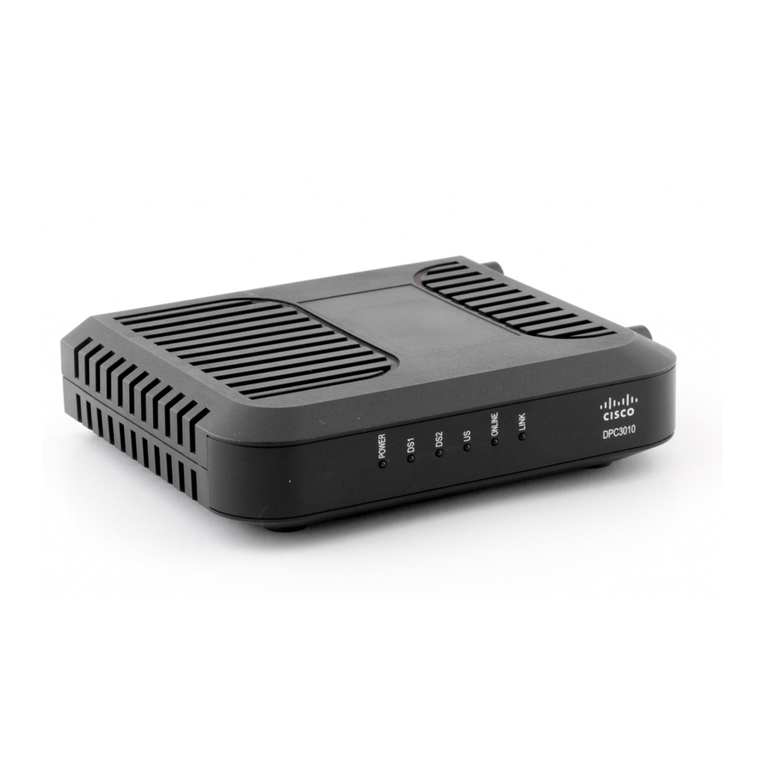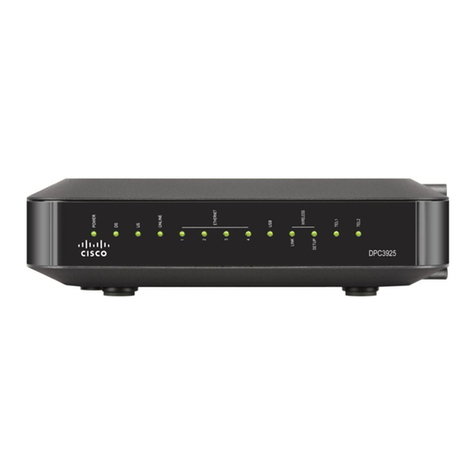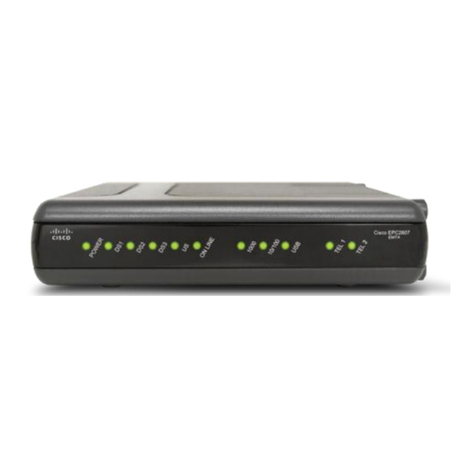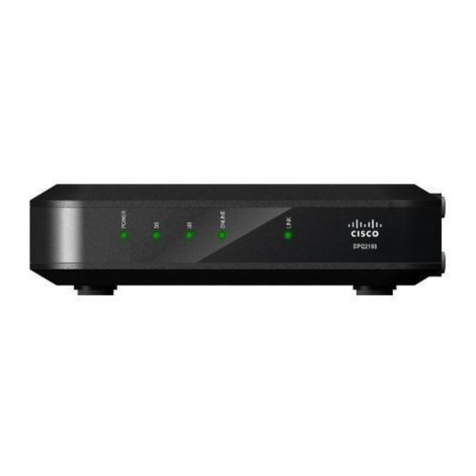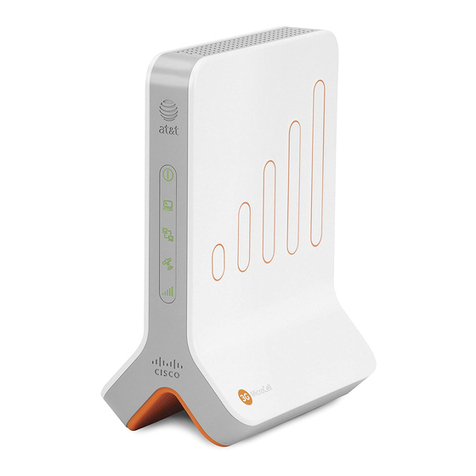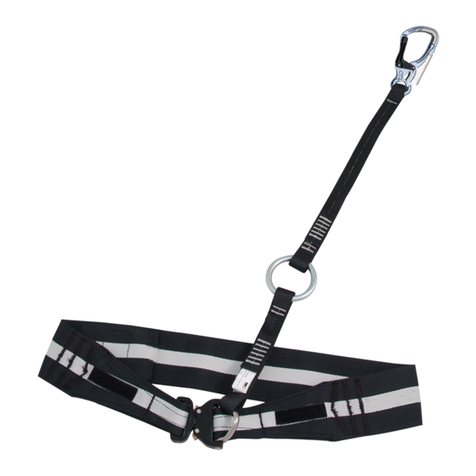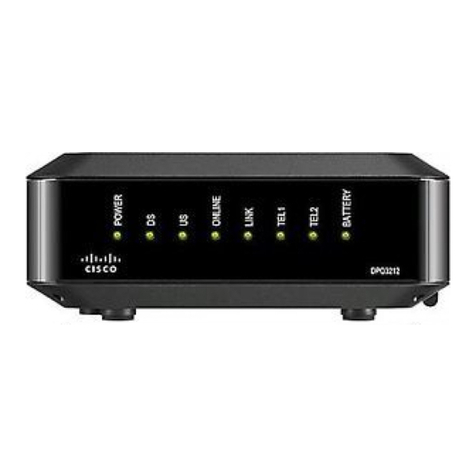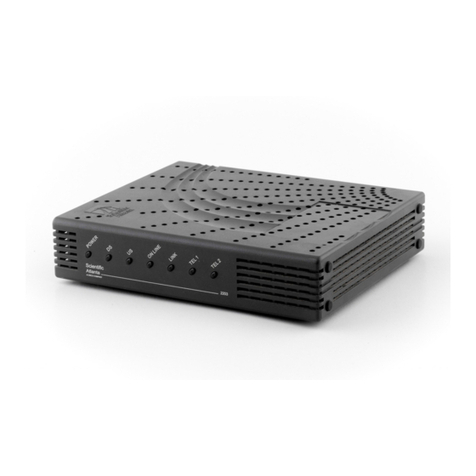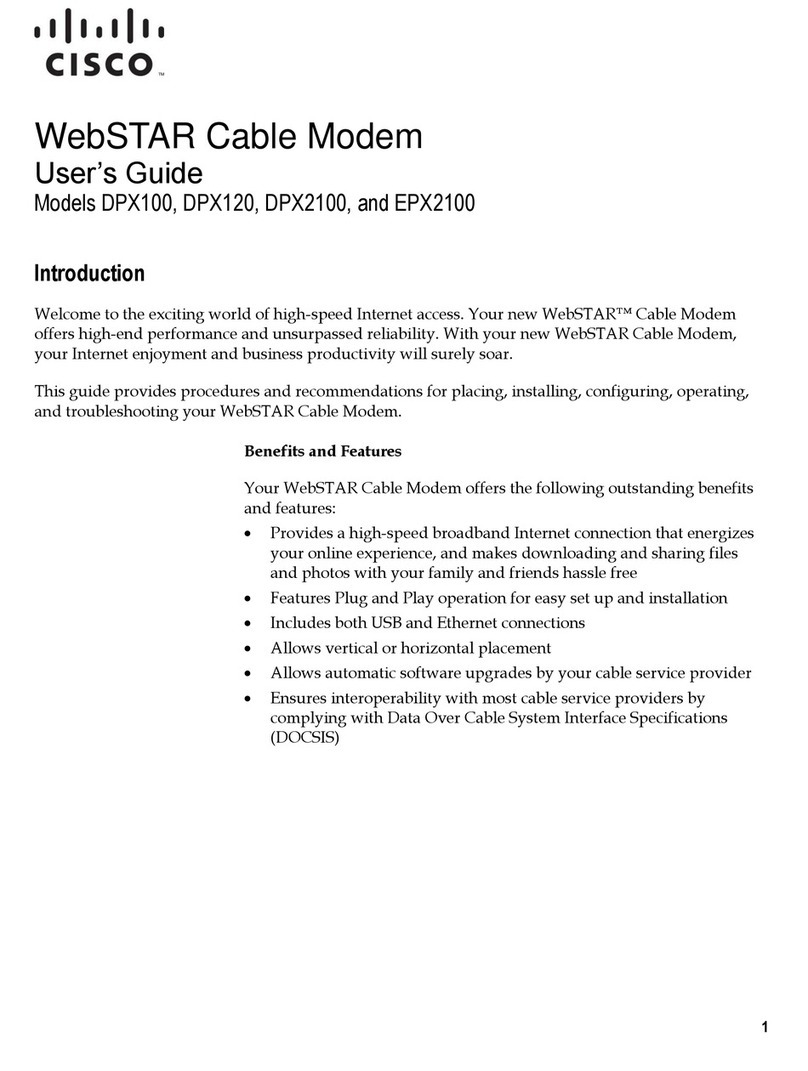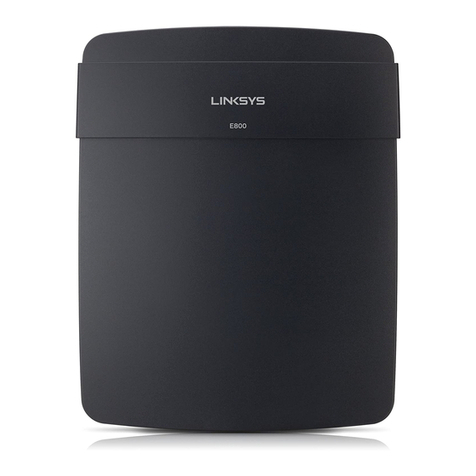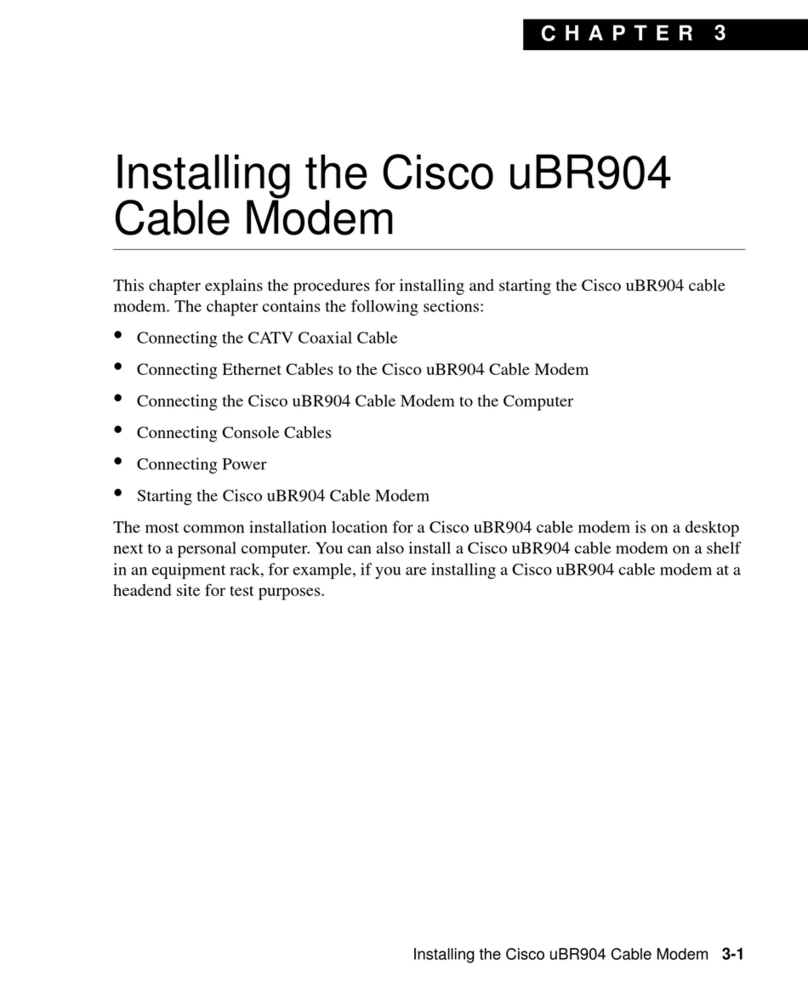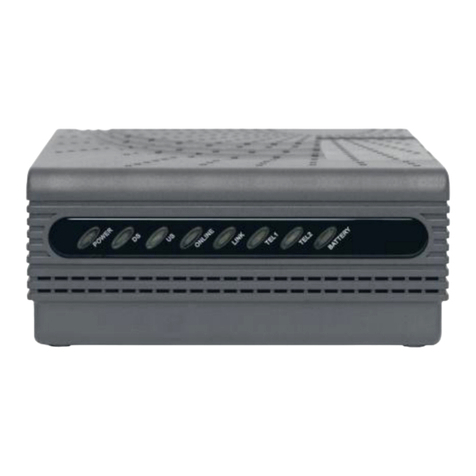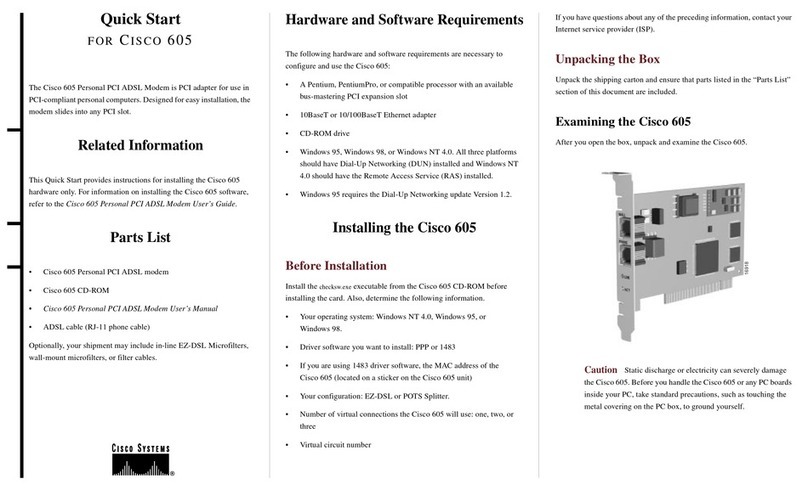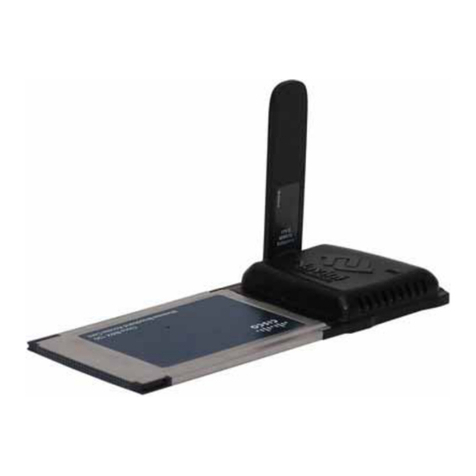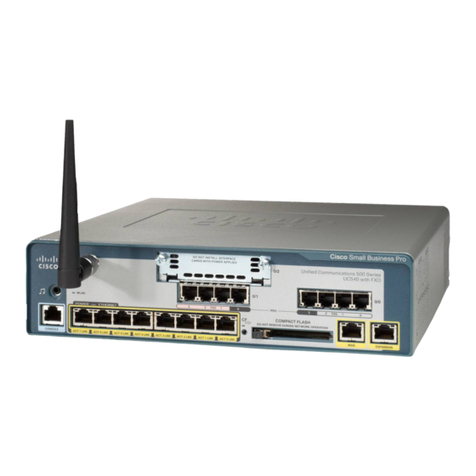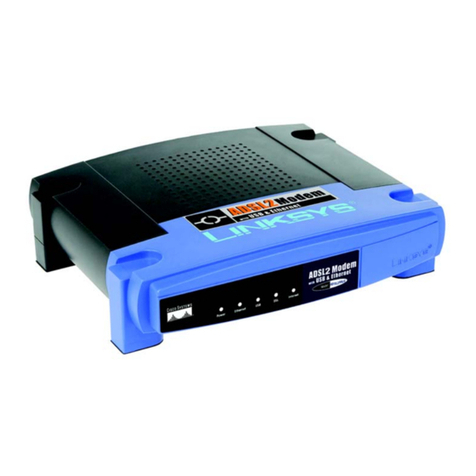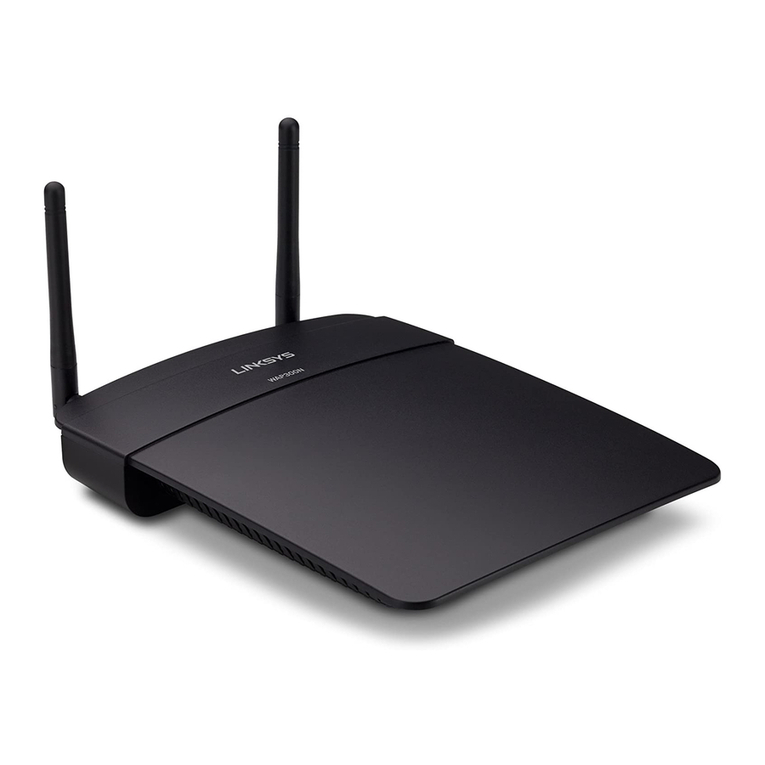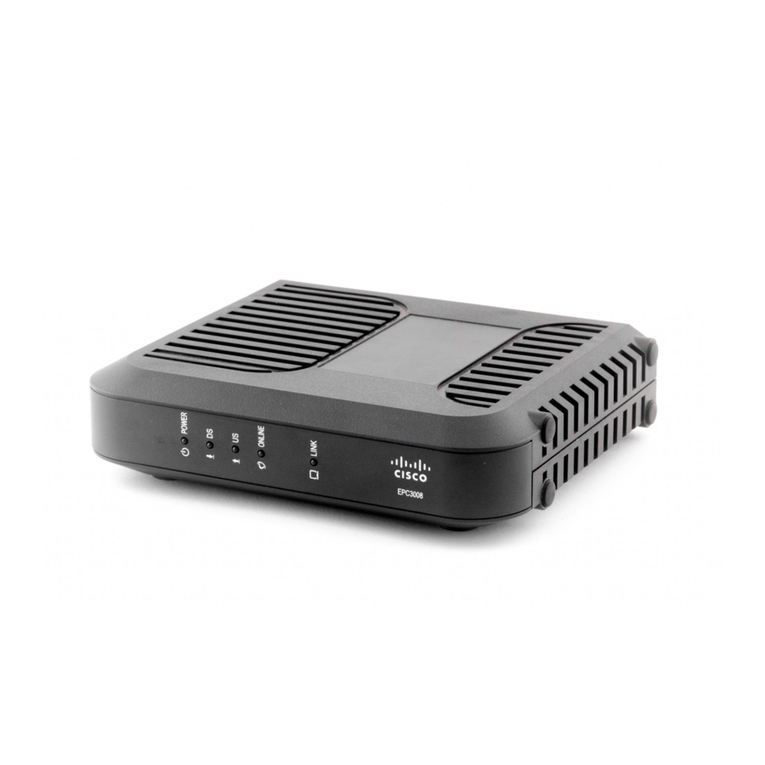Product Overview 1-5
Physical Description
System Specifications
Table 1-1 lists the Cisco uBR904 cable modem physical specifications and power
requirements.
Table 1-1 Cisco uBR904 Cable Modem Physical Specifications
Description Specification
Dimensions (H x W x D) 2.30 x 13.50 x 9.30 in. (5.08cm x 34.29cm x 24.77cm)
Weight ~ 4.5 lb (~ 2.04 kg) for the Cisco uBR904
~ 0.5 lb (~ 0.23 kg) for the AC-input external power supply
AC-input voltage 120 to 240 VAC1wide input with power factor correction
1. VAC = volts alternating current.
AC-input current rating 1.2A2maximum at 120 VAC and 0.6A maximum at 240 VAC
2. A = ampere.
AC-input cable 18 AWG3three-wire cable, with a three-lead receptacle on the power supply end, and a
North American (NEMA 5-15P) plug on the power source end
3. AWG = American Wire Gauge.
Power dissipation 12 to 15W
Frequency 50/60 Hz4
4. Hz = hertz.
Temperature 23 to 113°F (0 to 40°C) operating; -13 to 95°F (-25 to 70°C) nonoperating
Humidity 5 to 95% noncondensing
Noise level 38 dBa5maximum at desktop, 43 dBa maximum in an office
5. dBa = adjusted decibels.
Software requirement Cisco uBR904 Cable Modem software and Cisco IOS Release 11.3(7) NA or later.
Agency approvals Safety: UL 1950, CSA 22.2 No. 950, EN60950
EMI: FCC Class A, FCC Class B, CSA Class A, EN60555-2, EN55022 Class B,
VCC1 Class 2, AS/NZS 3548 Class A
Immunity: IEC-1000-4-2, IEC-1000-4-3, IEC-1000-4-4, IEC-1000-4-5, IEC-1000-4-6,
IEC-1000-4-11, IEC-1000-3-2, IEC 60950, AS3260, TS001
See also the Regulatory Compliance and Safety Information for the Cisco uBR904
document.
